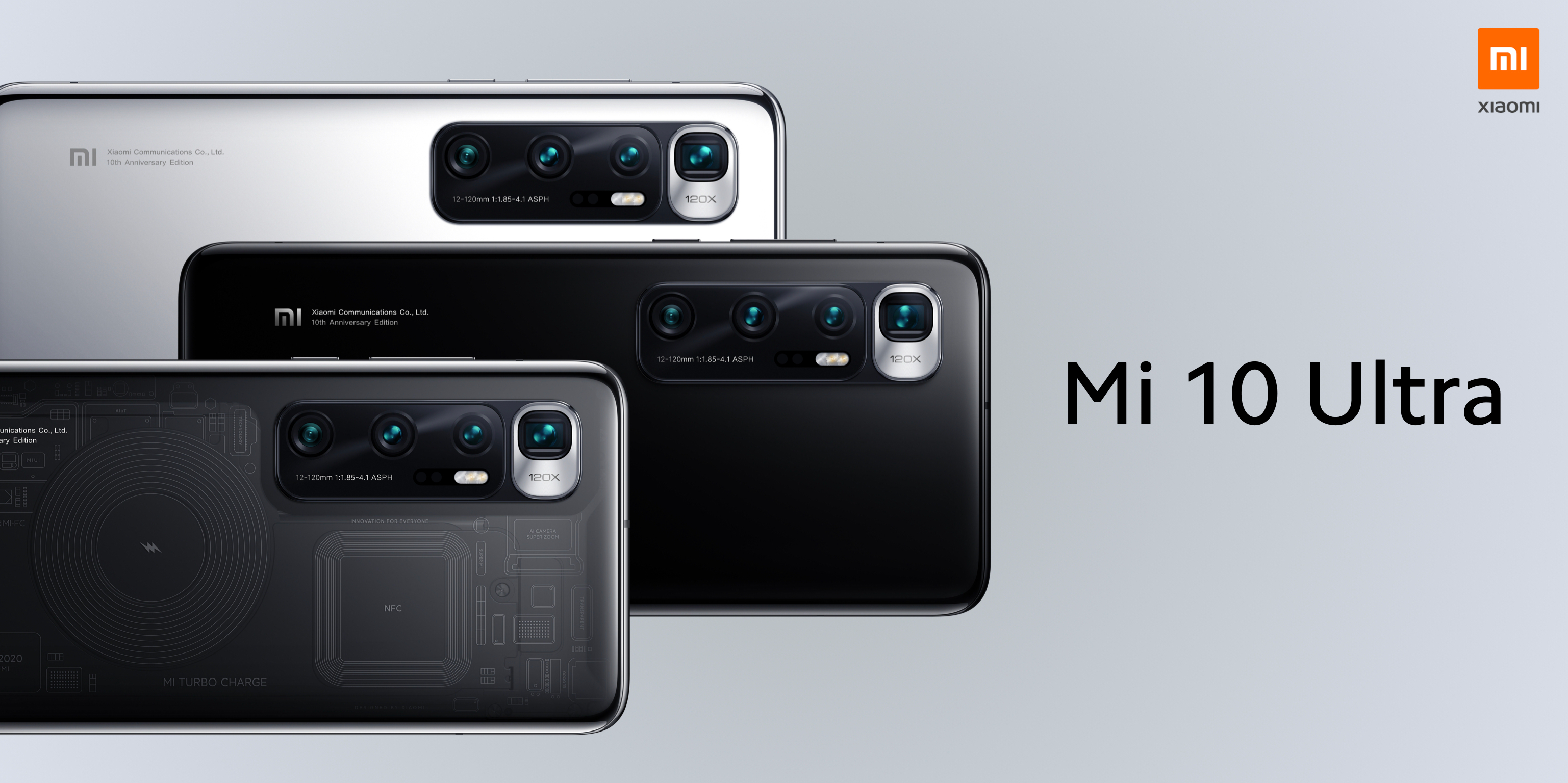Read update
- Xiaomi confirmed to GSMArena that the Mi 10 Ultra is exclusive to China and "unlikely" to launch globally. The company has also ruled out a rebranding under a sub-brand like Poco.
For its 10th anniversary, Xiaomi has decided to mix all of the highest specs it could imagine, turn on the blender, and create the Mi 10 Ultra. The flagship's hardware list reads like a collection of almost all the high-end components currently available on the market, and it's packaged in a good looking exterior.
The outside is glass front and back, with a bulky quad-camera array decorating the top left corner of the back. On the front of the phone, you'll find a 120Hz FHD+ 6.67-inch OLED with a 19.5:9 aspect ratio, but sadly, it's curved. The front camera sits in a hole-punch cutout in the top left corner, coming in at 20MP. The phone is available in "Obsidian Black" or "Mercury Silver," but there's also an interesting "Transparent Edition" that shows the outlines of the hardware hidden underneath the glass.
The 48MP main shooter is accompanied by a 120x digital zoom telephoto lens, a 20MP ultra-wide angle camera, and a 12MP "portrait lens." The main camera is capable of producing 8K 24fps videos and HDR clips, and thanks to pixel binning, it should be able to take pretty good images at night, too.
SPECS
|
Display |
6.67″ OLED TrueColor curved display, 19.5:9 aspect ratio, FHD+, 120 Hz refresh rate |
|
Color contrast ratio |
5,000,000:1 (typ) |
|
Gamut |
100% DCI-P3, Color accuracy: ∆E <1.0, JNCD: <0.63 |
|
Processor |
Qualcomm Snapdragon 865, KyroTM 585 CPU, Octa-core CPU, up to 2.84 GHz, AdrenoTM 650 GPU |
|
Storage |
LPDDR5 + UFS 3.1 |
|
Colors |
Obsidian Black, Mercury Silver, Transparent Edition |
|
Dimensions |
162.38 x 75.04 x 9.45mm, 221.8g |
|
Rear cameras |
48MP ultra-clear primary camera, 1/1.32” super sensor, 2.4μm 4-in-1 Super Pixels, supports OIS, f/1.85, 8P lens |
|
Front camera |
20MP 1.8mm in-display selfie camera, HDR, AI portrait selfies, AI scene detection, portrait video |
|
Connectivity |
Wi-Fi 6, 5G MultiLink |
|
Battery & Charging |
4,500mAh (typ) battery |
|
Miscellaneous |
Dual stereo speakers, AI noise reduction, in-screen fingerprint sensor, Face Unlock, Graphene Cooling System + LiquidCool 2.0 vapor chamber |
The Mi 10 Ultra's Snapdragon 865 (no, not the Plus variant) is accompanied by 8-16GB of RAM and 128-512GB of storage, depending on which variant you buy. To help it perform better over long gaming sessions, Xiaomi has added active and passive cooling measures in the form of graphene and liquid technologies. Other than that, the phone comes with a USB-C port, no headphone jack, Wi-Fi 6, 5G, Bluetooth, an NFC chip, and an IR blaster. There are also dual-stereo speakers, an in-display fingerprint sensor, and optional face unlock.
But the most significant achievement Xiaomi can boast is probably its 120W wired fast charging, which is possibly the first time we see this technology in a mass-produced phone. The same is true for the impressive 50W wireless charging, which many phones can barely reach with a wire. The 4,500mAh battery can also wirelessly charge accessories at 10W. Let's just hope the battery is durable, as charging speeds that high might hurt its longevity. 4,500mAh also feels rather small when you consider that the battery needs to power a 120Hz display, though the Galaxy S20 does just fine with similar constraints.
The Mi 10 Ultra will be available in China from August 16, starting at ¥5,299 (~$760). The company has yet to share when and if the phone will come to other regions, and what it will cost internationally.
UPDATE: 2020/08/13 3:18am PDT BY MANUEL VONAU
Xiaomi confirmed to GSMArena that the Mi 10 Ultra is exclusive to China and "unlikely" to launch globally. The company has also ruled out a rebranding under a sub-brand like Poco.
Source: Xiaomi

